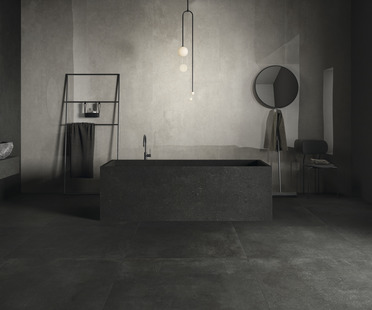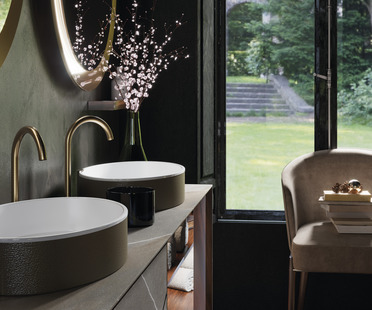Tag London
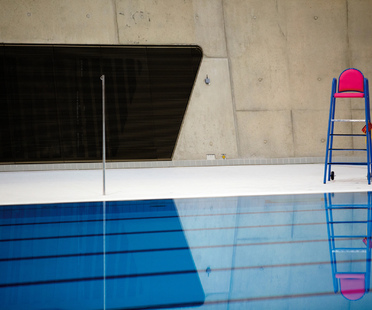
16-03-2018
Throwback Olympics: Londra 2012 by Janie Airey
The PyeongChang Winter Olympics have just ended. We would love to take this occasion to introduce you to Janie Airey, an English photographer who shot the Olympic stadiums of London in 2012. In her work you will not find the fundamentals of architectural photography, but rather a lucid perspective celebrating space and silence, the calm before the storm. The PyeongChang 2018 Winter Olympics have just ended, leaving behind the memories of the Games, their related activities and their infrastructures. We would like to take the opportunity to describe an older project that is really worth mentioning. We are talking about the work by English photographer Janie Airey, performed during the London 2012 Summer Olympics. Before athletes, trainers, screaming fans and press staff entered the London stadiums, the Olympic Delivery Authority commissioned from Airey a series of photographs depicting the architectures created for the Olympics. In the words of the very photographer: “You rarely get the chance to appreciate the silence and scale of such amazing architectural forms”, especially because when they are open, they are obviously crowded. This way, Janie Airey had the privilege to enter the Olympic spaces before their inauguration, while the atmosphere was still calm, and everything was just brand new. “With these photographs I wanted to celebrate the beauty of both the line and form of these constructions, and to capture the incredible sense of calm and stillness you felt walking round them before the explosion of excitement that the UK experienced that summer.” If this was Airey’s objective, there is no doubt that she achieved it. Focussing on details, rather than photographing the buildings in their entirety, turned out to be a winning choice. Indeed, the elegant beauty of the structures and their clean lines were transformed into purity and incisive simplicity, creating photographs that could do justice to the grandeur of the designs by Zaha Hadid, Hopkins Architects and Populous with few but well-defined lines. Janie Airey’s approach to architecture photography is not traditional: she does not use tilt-shift lenses to manage the vertical lines, nor does she adjust them during the post-processing phase; also, she rarely uses tripods, as she finds them too restrictive. The Olympic buildings are vast and offer an endless series of possibilities. In two days of shootings, Airey brought back home a thousand photographs, but she would have taken even more. What worried Janie the most while carrying out the job was the excess of abstractionism, that is not always welcomed by architecture photographs. In this kind of photography, one usually tends to try and give an idea of scales and proportions. Entering too much into the details could have resulted into a boring, lifeless and excessively abstract job. In Airey’s words: “The end result proved me wrong thankfully. The structures and compositions spoke for themselves”. For sure, we can only agree. By looking at a framed springboard or at the chair of a judge, we can feel the presence of the entire Aquatic Centre. An aerial view of a door is enough to lead us to imagine the entire hockey stadium. The net can easily describe the entire tennis court. Architect Mies van der Rohe once said that “God is in details”: he was probably right, and Janie Airey can surely confirm that. Francesco Cibati Website: www.aireyspaces.com Shop: www.aireyspaces.com/shop
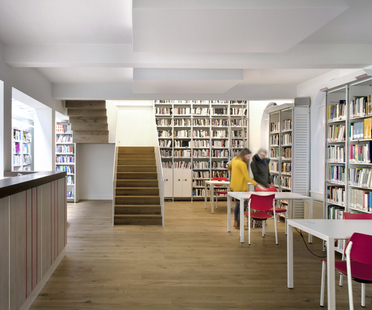
09-03-2018
A new design for the Instituto Cervantes of London by Binom Architects
The designers from Binom Architects redesigned the new Instituto Cervantes in London, inside a Neo-Georgian building dating from the 1950s.
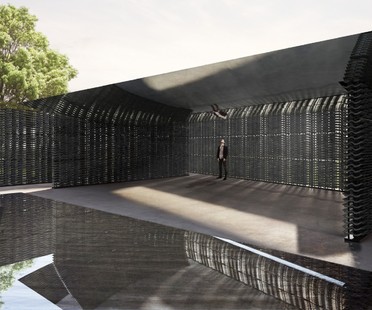
19-02-2018
Frida Escobedo’s Serpentine Pavilion 2018
Light, water and geometry are the keys to the Serpentine Pavilion 2018 by Mexican architect Frida Escobedo.
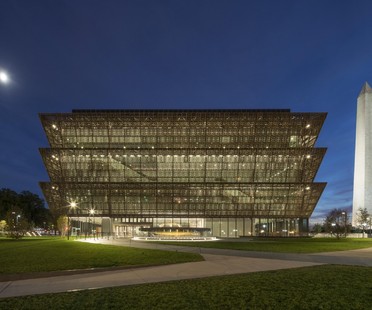
01-02-2018
David Adjaye’s Washington Museum named Best Design of the Year 2017
The London Design Museum has announced the winner of the Beazley Design of the Year 2017 award, naming the Smithsonian National Museum of African American History and Culture in Washington, D.C., designed by a group of architects led by David Adjaye as Best Design of 2017.
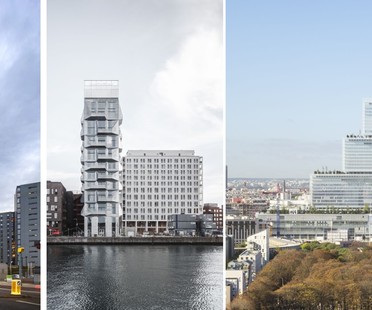
30-01-2018
Europe’s most beautiful skyscrapers at the 2018 CTBUH Awards
CTBUH has announced the names of the finalists shortlisted in all categories of the 2018 CTBUH Awards. Here are Europe’s five best tall buildings.
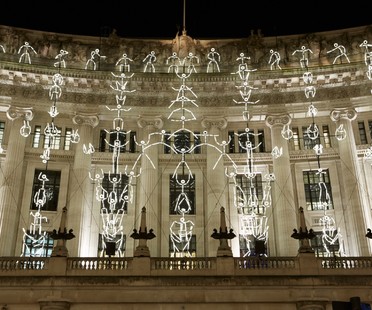
26-01-2018
Architecture and light in London and Amsterdam nights
Light and art installations, games, mapping and special effects reinterpret architecture and urban spaces to offer citizens and visitors amazing artistic light shows every night during Lumiere London and the Amsterdam Light Festival.
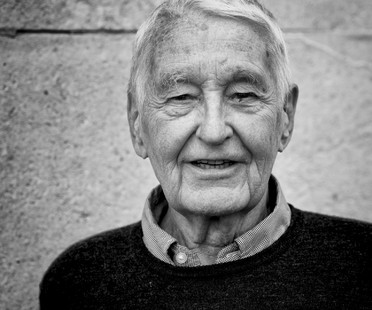
18-01-2018
Farewell to Modernist architect Neave Brown
Modernist architect Neave Brown, known primarily for his projects of the ’70s, was awarded the Royal Gold Medal for Architecture by RIBA in October 2017 and passed away on January 9.
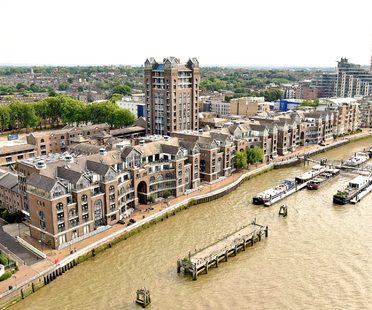
05-01-2018
Chris Johnson. London from a helicopter
UK-based professional photographer, Chris Johnson shares his aerial shots of London taken from a helicopter, giving us a unique view of the new, iconic buildings in the UK capital. Chris Johnson is a full-time professional photographer based in Hastings, East Sussex. His passion and enthusiasm for photography started at an early age, with both his father and grandfather being photographers. Growing up with constant access to cameras helped fuel his interest in this visual art. Chris Johnson's experience of the change from analogue photography to digital photography was positive because he focuses on the technological aspect in order to capture the moments that matter, particularly important in his sector - photojournalism - where even a millisecond can make the difference in the visual narrative. He arrived at aerial photography through The London Helicopter, a company offering flights to see London from above, grabbing an overall view of the urban fabric with unexpected gems like green roofs and architectural solutions that aren't visible from a conventional perspective. A great advantage due to the choice of subjects, as we can see here in the pictures of the new buildings constructed recently along the Thames but not without its pitfalls. Because, unlike architecture photography using a tripod and the large format that some photographers adopt, taking photos from a hovering helicopter is completely different - it moves, it jerks, you need to have a firm hand and be quick, not dissimilar to taking shots of moving people. Perhaps these similarities are why Chris Johnson gets such a buzz out of aerial photography the way he sees it because there is no clear difference between the iconic architecture and the rock stars and sportspeople he normally photographs. Not only that but the aerial perspective becomes innovative and unique in a world where social media is jam-packed with the same shots of the same buildings taken from the same angles, particularly in a tourist hotspot like London. Of course, we asked him what he thought about using drones for aerial pictures. Chris Johnson actually owns a drone, which he bought after experiencing the views from a helicopter but he sees them as two completely different worlds. He considers himself a purist and he likes to capture photos with minimal editing; with drones, he doesn't have the same immediate control and quality of his camera. These details make all the difference - when Johnson flies over London in a helicopter he is always behind the camera and he can adjust zooms, angles and settings to give optimal quality and that personal touch, which would otherwise be lost in the “boilerplate concept” dictated by the inevitable orthogonal setting of the drone. @chrisbuerklein Chris Johnson http://www.chrisjphotography.biz/
















